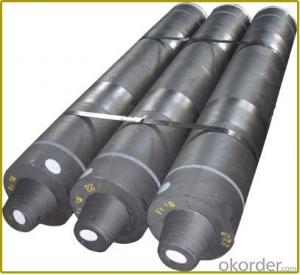When it comes to powering our gadgets and devices, the choice of electrode material can make a significant difference. Two popular options in the battery world are artificial and natural graphite electrodes. But which one is the right choice for your needs? Let’s dive into the comparison with a less formal and more personal touch, exploring the pros and cons of each, and see which one comes out on top.
First off, let’s talk about artificial graphite electrodes. These are man-made materials, crafted to provide a specific set of properties that are desirable for battery performance. They are engineered to have high electrical conductivity, which is a must for any battery that aims to deliver a good power output. The manufacturing process of artificial graphite allows for a high level of control over the final product’s characteristics, such as particle size, structure, and purity. This level of customization is a significant advantage, as it enables manufacturers to tailor the electrodes to the specific requirements of different battery chemistries and applications.
Now, let’s switch gears and talk about natural graphite electrodes. These are derived from natural sources and are processed to be used in batteries. They have been around for a while and are known for their purity and crystallinity. Natural graphite electrodes have a unique structure that allows for efficient lithium ion diffusion, which is crucial for high-performance batteries. They also have a lower cost compared to artificial graphite, which can be a significant factor for manufacturers looking to keep production costs down.
But, as with everything, there are trade-offs. While natural graphite electrodes might be cheaper, they can have some drawbacks. One of the main concerns is their lower tap density compared to artificial graphite. Tap density refers to the density of a powder when it’s been tapped or lightly impacted, which can affect the energy density of the battery. A lower tap density means that less active material can be packed into the battery, which can limit the overall performance.
On the other hand, artificial graphite electrodes, while offering better tap density, can be more expensive to produce. This can lead to higher costs for the end consumer. Additionally, the manufacturing process of artificial graphite is more complex and requires more energy, which can have environmental implications.
When it comes to safety, both types of electrodes have their own set of concerns. Natural graphite electrodes can be more prone to swelling and degradation over time, which can lead to safety issues in some cases. Artificial graphite, while more stable, can still have safety concerns if not manufactured and used correctly.
In terms of environmental impact, the production of artificial graphite generates more waste and requires more energy, which can contribute to a larger carbon footprint. Natural graphite, being a naturally occurring material, has a lower environmental impact in terms of production. However, the mining and processing of natural graphite can also have its own set of environmental concerns.
So, which one should you choose? It really depends on your specific needs and priorities. If you’re looking for a high-performance battery with a high energy density and don’t mind the higher cost, artificial graphite electrodes might be the way to go. But if you’re more concerned about the environmental impact and cost, natural graphite electrodes could be a better fit.
In conclusion, both artificial and natural graphite electrodes have their own set of advantages and disadvantages. It’s essential to consider factors such as performance, cost, safety, and environmental impact when making a decision. The choice between the two is not a simple one, and it requires a careful evaluation of your specific requirements and the trade-offs you’re willing to make. Whether you’re a manufacturer, a consumer, or a researcher, understanding the differences between these two types of electrodes can help you make a more informed decision about which one is right for your needs.

